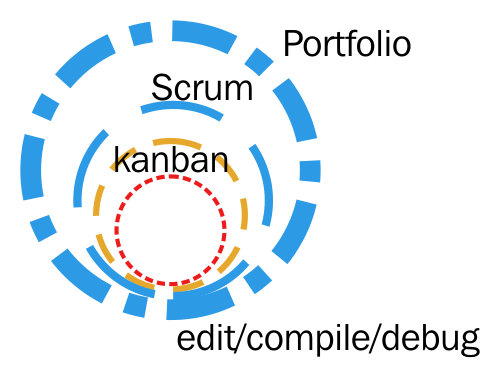There are several different cycles in Agile development, from the Portfolio level through to the Scrum and Kanban cycles and down to the Continuous Integration (CI) cycle. The emphasis on which cadence work happens in is a bit different depending on which Agile framework you are working with. Kanban emphasizes the 24-hour cycle, which is popular in operations teams. Scrum cycles can be two to four weeks and are often used by development teams using the Scrum Agile process. Longer cycles are also common and are called Program Increments (PI), which span several Scrum Sprint cycles, in the Scaled Agile Framework (SAFe®):

DevOps must be able to support all these cycles. This is quite natural given the central theme of DevOps: cooperation between disciplines in an Agile organization.
The most obvious and measurably concrete benefits of DevOps occur in the shorter cycles, which in turn makes the longer cycles more efficient. Take care of the pennies, and the pounds will take care of themselves, as the old adage goes.
Here are some examples of when DevOps can benefit Agile cycles:
- Deployment systems, maintained by DevOps engineers, make the deliveries at the end of Scrum cycles faster and more efficient. These can take place with a periodicity of two to four weeks.
- In organizations where deployments are done mostly by hand, the time to deploy can be several days. Organizations that have these inefficient deployment processes will benefit greatly from a DevOps mindset.
- The Kanban cycle is 24 hours, and it's therefore obvious that the deployment cycle needs to be much faster than that if we are to succeed with Kanban.
- A well-designed DevOps CD pipeline can deploy code from being committed to the code repository to production in a matter of minutes, depending on the size of the change.



































































